|
Humayun Tomb
Built by the wife of Humayun, Haji Begum in the mid 16th century, this red sandstone structure is considered to be the predecessor of Taj Mahal. The structure is one of the best examples of Mughal Architecture. Humayun's wife is also buried in the red and white
|
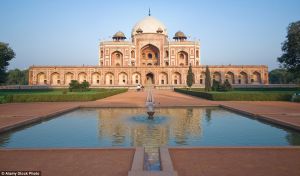 |
|
Old Fort
It is believed that the Pandavas had built their capital, Indraprastha at the place where the old fort stands today. This fort, now in ruins, was the seat for administration for many emperors. The legendary Prithviraj Chauhan ruled from here till he was defeated by Abdali in the battle of Panipat. A new light & sound show is held by the Department of Delhi Tourism every evening. Timings and Tickets are available from the tourist office.
|
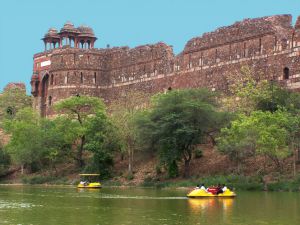 |
|
Red Fort
Built-in Red Sandstone this imposing fort is 3 kms in perimeter with the height of the wall varying from 18 to 30 meters at places. When the Red Fort was being built the Yamuna used to flow on its one sides and there were deep moats on the other. Today the Yamuna flows almost a kilometer away from the fort and the moats have dried up. In the evening the Delhi Tourism organizes a light and sound show which narrates the history of Delhi in context of the Red Fort. The Lahore gate, the main entrance, has some emotions and sentiments attached with the Indian independence as the Tricolour flutters on the top of this gate.
On 15th August the Indian Prime minister addresses the nation from here. As soon one enters in the fort from the Lahore gate There is a small Bazaar, here all kinds of items are available. This Shopping arcade was known as the Mina Bazaar and was open only to women on Thursdays's during the Mughal era.
|
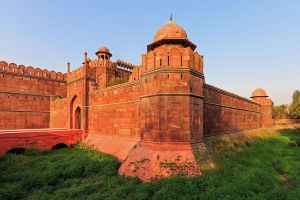 |
|
India Gate
The India Gate, (originally called the All India War Memorial), is a war memorial located astride the Rajpath, on the eastern edge of the ‘ceremonial axis’ of New Delhi, India, formerly called Kingsway. India Gate is a memorial to 82,000 soldiers of the undivided Indian Army who died in the period 1914–21 in the First World War, in France, Flanders,
Mesopotamia, Persia, East Africa, Gallipoli and elsewhere in the Near and the Far East, and the Third Anglo-Afghan War. 13,300 servicemen's names, including some soldiers and officers from the United Kingdom, are inscribed on the gate. The India Gate, even though a war memorial, evokes the architectural style of the triumphal arch like the Arch of Constantine, outside the Colosseum in Rome, and is often compared to the Arc de Triomphe in Paris, and the Gateway of India in Mumbai. It was designed by Sir Edwin Lutyens.
|
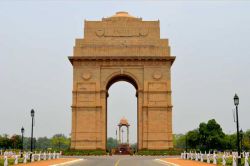 |
|
Qutab Minar
In 1199, Qutbuddin raised the Qutab Minar either as a victory tower or as a minaret to the adjacent mosque. From a base of 14.32 meters. it tapers to 2.75 meters. at a height of 72.5 meters. It is still the highest stone tower in India, one of the finest stone towers in India, one of the finest Islamic structures ever raised and Delhi's recognized landmark.
It was completed by the Sultan's successor and son-in-law, Iltutmish. The tomb of Iltutmish, which he himself built in 1235, is nearby, Its interiors are profusely decorated with calligraphy, though the dome has collapsed.
|
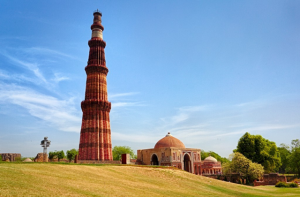 |